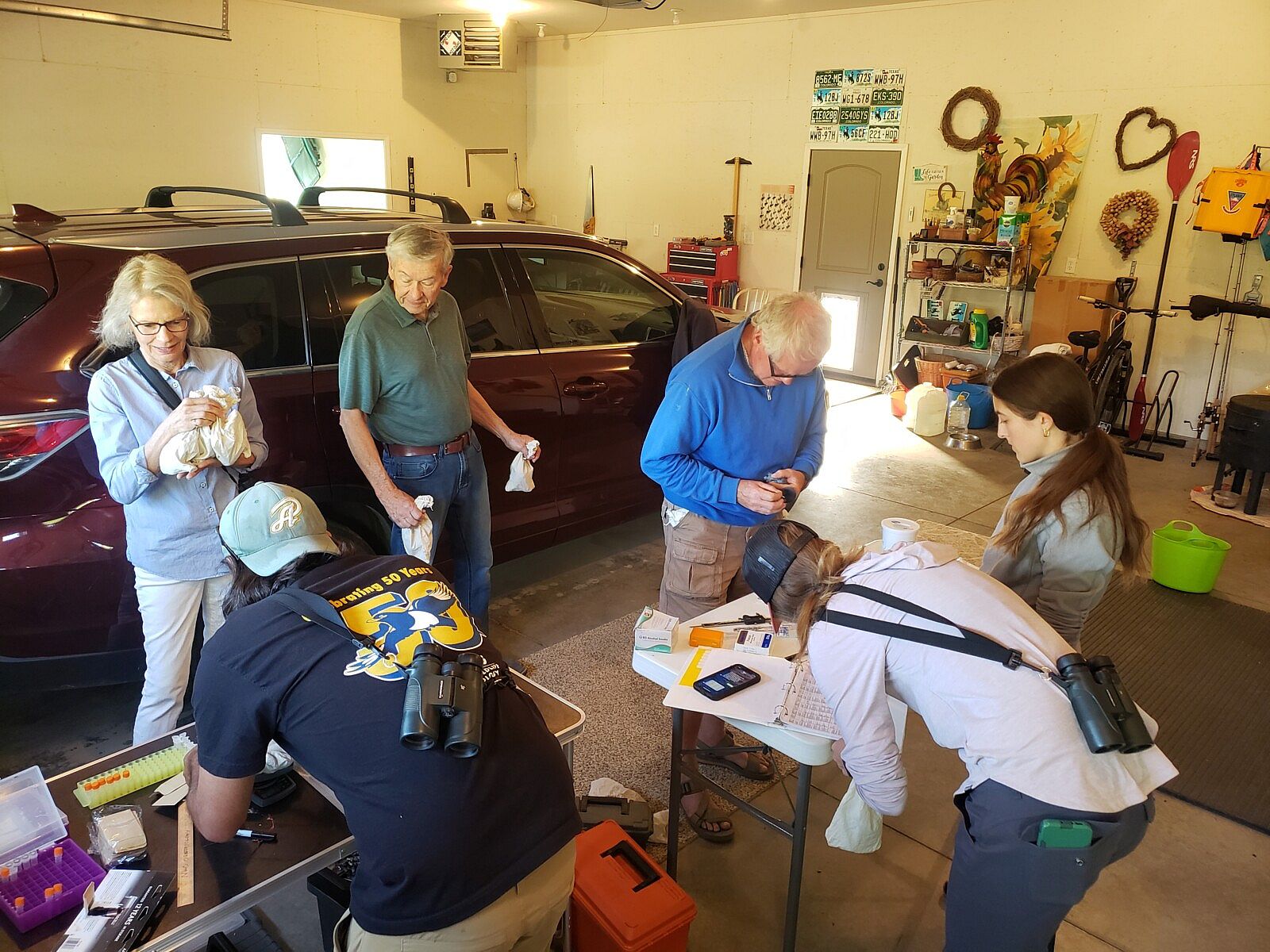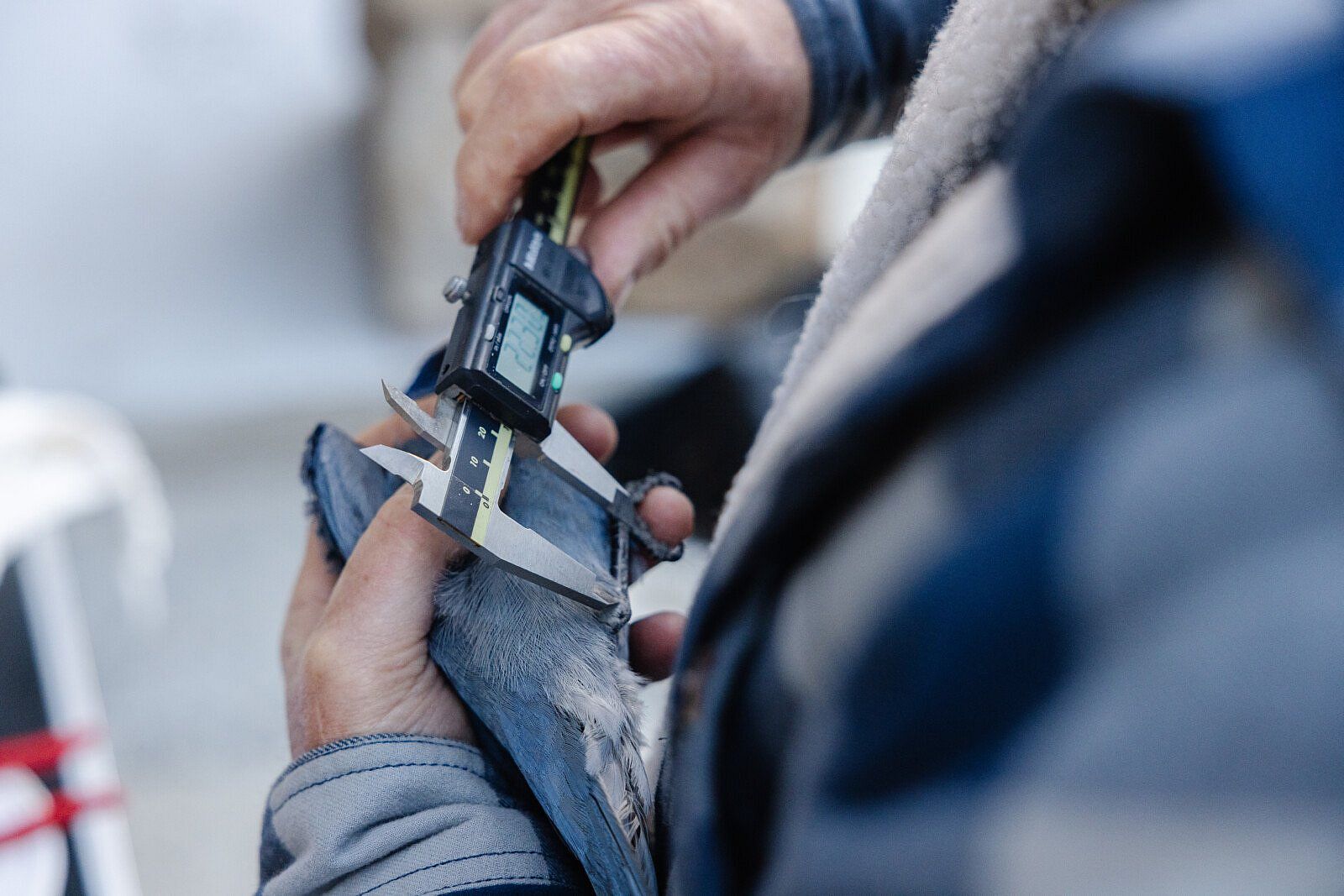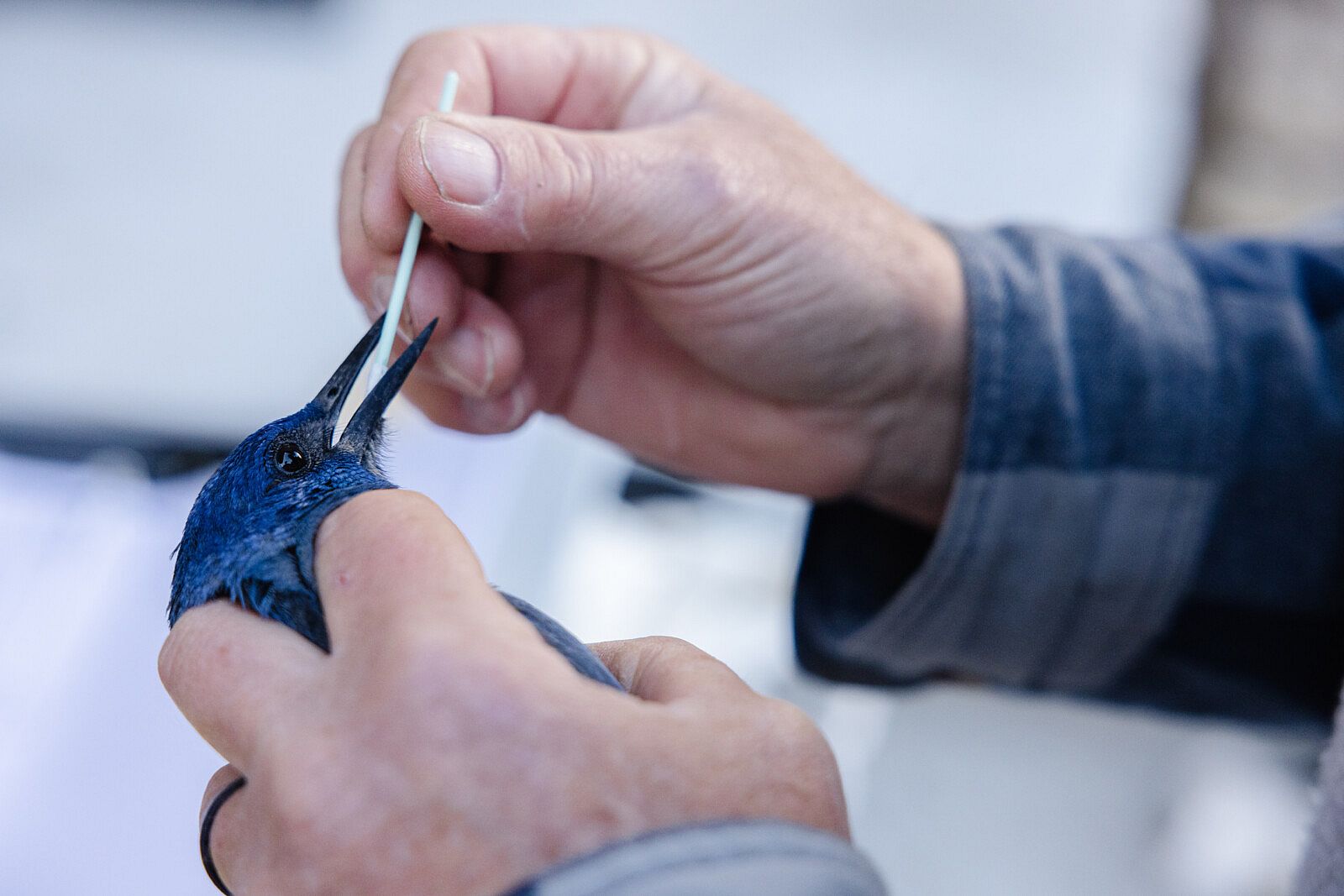
Taking Flight with Pinyon Jays
The Pinyon Jay is named for its characteristic behaviors of both nesting in piñon pine trees and eating their seeds. A relative of ravens, crows, magpies, and other jays, this blue bird lives year-round in many areas across the western United States, including here in Wyoming. The piñon pine, on the other hand, grows only in the southern half of that range. In the north, the Pinyon Jay instead includes the seeds of the limber pine in its omnivorous diet. Species like the Pinyon Jay that cache excess food for later consumption help to disperse the seeds of these pines and are instrumental in facilitating their growth.
Since 1970, the Pinyon Jay population has declined by about 85 percent. This is partly due to the removal of pine forests in order to prevent wildfires, increase agricultural production, and create more habitat for sagebrush-reliant, extinction-threatened species like the Greater Sage-Grouse. In 2022, the U.S. Fish & Wildlife Service received a petition to list the Pinyon Jay as an endangered species.
When petitioned, the USFWS determines whether there is “‘substantial information’ indicating that the petitioned listing may be warranted.” In some parts of the Pinyon Jay’s range, there is not. Such is the case in parts of Wyoming, where Pinyon Jays have never been formally studied.
Fortunately for the Bighorn Basin’s resident jays, the Draper Natural History Museum began field research earlier this year in collaboration with the USFWS, Bureau of Land Management, Northwest College, and the Museum of Wildlife and Fish Biology at the University of California, Davis. For three weeks in April, May, and June, researchers visited sites in Park County to trap the Pinyon Jays.
The June fieldwork week, starting on the 18th, also happened to be the second week of my internship with the Draper Natural History Museum at the Buffalo Bill Center of the West. Before then, I had never seen a Pinyon Jay, and I’m not sure how, because they’re hard to miss.
At first, you can only hear them. A Pinyon Jay’s call is a loud “kraaaw” resembling a magpie’s. The social birds often move in a large, noisy flock. This time of year, the juveniles are especially talkative, frequently begging their parents for food.
While the juveniles are gray, the adults are dusty-blue and vibrant against Wyoming’s desert landscapes. Their scientific name, Gymnorhinus cyanocephalus, refers to the lack of feathers near their nasals and to their particularly blue heads.
Several landowners around Cody have committed to filling their feeders regularly and keeping track every time Pinyon Jays appear, noting the number of birds, the length of their stay, and other important details. The jays tend to enjoy sunflower seeds, eating many and caching even more for later.
During our most recent week of fieldwork, we waited for the jays at landowners’ homes, waiting behind the windows with a seemingly endless supply of muffins. Early in the morning, often before 6 a.m., we set traps below the feeders. When the jays arrived, they were immediately curious… and just hungry. The jays were free to move in and out of the traps, the doors held open by a straight piece of wire. When the birds were far enough past the door, we could shut it from inside the house, often trapping multiple birds at once.
Then, our group would place the trapped jays in small fabric bags, quickly transporting them to tables of equipment waiting in the garage. Early in the week, we saw very few jays, though we were able to capture two magpies. Toward the end of the week, at the same site, we had about ten jays in bags at one time and it took the whole morning to go through the banding process.
The jays were each banded with both USGS aluminum bands and up to three colored plastic ones. These bands are placed around a bird’s legs and are arranged in different patterns to make the individuals easier to tell apart.
Banding isn’t the only reason for trapping the jays, though. For each bird, we also took measurements from multiple parts of their wings, legs, and bill, which can show physical differences between individuals, including those caused by conditions like Avian Keratin Disorder. We collected fecal samples, saliva samples, and blood samples, scanning for diseases like West Nile virus and avian malaria. Finally, we noted the plumage colors and indications of molting in each bird’s feathers.
One of the most important measurements is the Pinyon Jay’s mass. The largest of the birds, still not much over 100 grams, were perfect candidates for two types of tiny GPS backpacks. The smaller Store-on-Board devices weigh just over two grams, but to retrieve the data, birds wearing these must be recaptured. The other type, the Argos tag, weighs double and transmits its data via satellite.
After each jay was banded, sampled, measured, and tagged, we released them outside. And then, it was on to the next bird.
In only a week of early mornings, long days, and exciting encounters with bobcats and angry kestrels in Oregon Basin, my first and last Pinyon Jay fieldwork was over. The lack of sleep was well worth it to hear the jays call as they flew from our hands to rejoin their flocks. Some of the young jays, not an hour after being released, would hop right back in the trap for another treat. It was a great experience to be a part of such valuable research and to get to know a cool local species in the process.
Written By
Bliss Bonner
Bliss Bonner is the 2024 Curatorial Intern with the Draper Natural History Museum. Having lived near Yellowstone National Park and its surrounding ecosystems for her entire life, she has always been deeply interested in the natural world and plans to study science communication at the University of Wyoming. While Bliss loves to travel and see other parts of the world, she is equally passionate about what the Cody area offers. She spends much of her time exploring the mountains and looking for birds, and she also enjoys creative arts and writing.




















